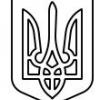Принос към доказването на българските права за Южна Добруджа
-
Последна активност
-
- 1274 мнения
- 99409 прегледa
-
Какво е точното пресъздаване на особеностите на пространствено-времевите теории Специална и Обща теория на относителността посредством хиперизмерен (над-триизмерен) пространствен подход? Има ли място подобен подход по отношение на квантовата механика? 1 2 3 4 8
От Станислав Янков, in Теоретична Физика
- 193 мнения
- 4627 прегледa
-
- 105 мнения
- 5247 прегледa
-
- 16 мнения
- 75 прегледa
-
- 208 мнения
- 14127 прегледa
-
-
Последно разглеждащи 0 Потребители
- No registered users viewing this page.





Препръчано мнение
Напиши мнение
Може да публикувате сега и да се регистрирате по-късно. Ако вече имате акаунт, влезте от ТУК , за да публикувате.